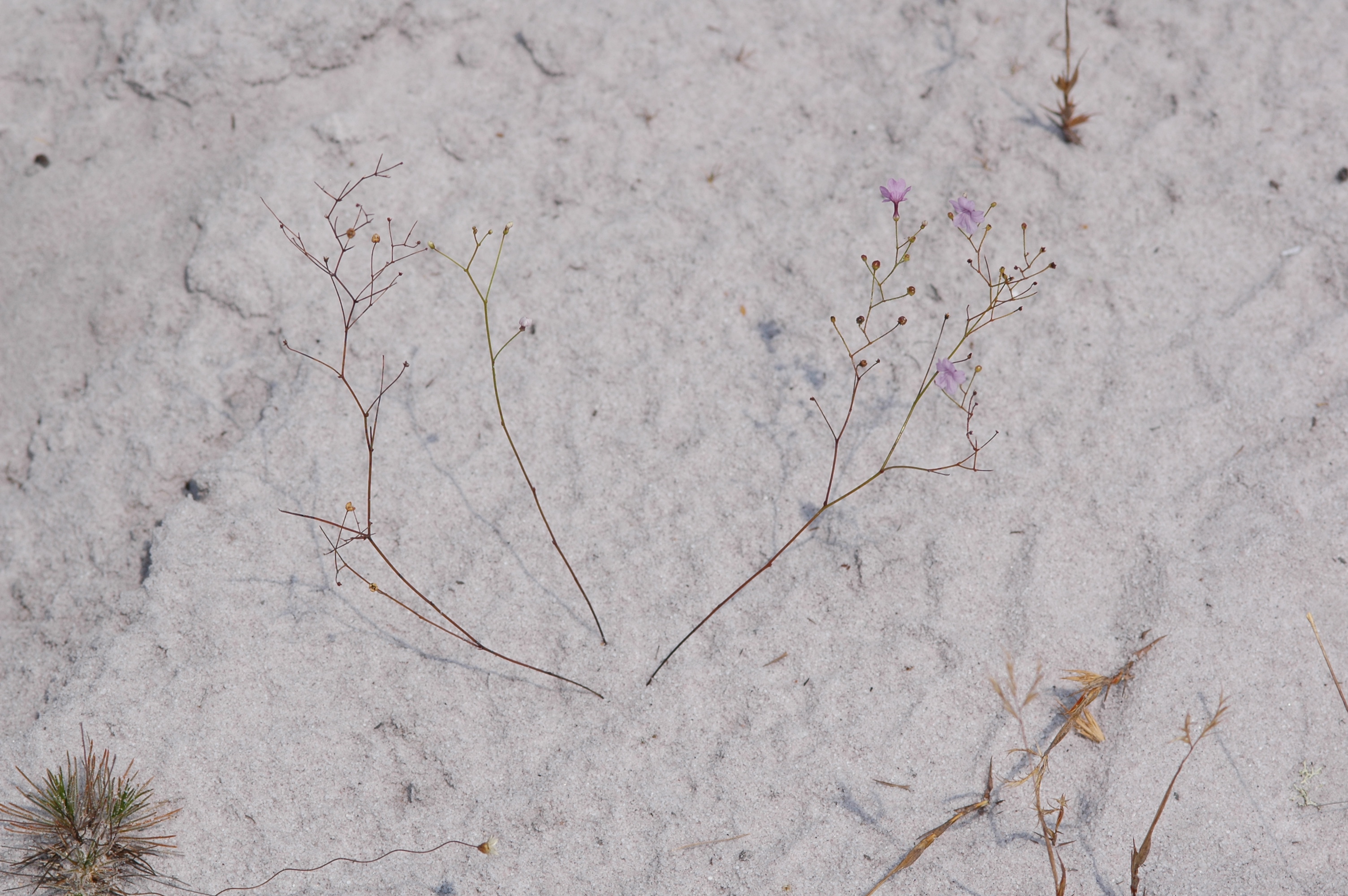Science News
A Murderous Plant!

This is a repost from last month. We didn't want you to miss this one!
If you were skipping along, you would admire this delicate little plant, perhaps picking the flowers to put in your hair. But Academy botanist Peter Fritsch would certainly know better.
This week he and his colleagues published a paper about the underground, murderous nature of this “flesh-eating plant” as described on Discover.
It’s a member of the genus Philcoxia, only described in 2000. Carnivory had been studied in this plant family before, but there was no clear proof. But then, Peter describes one day when…
… I was looking at the minute leaves (a few millimeters in diameter) under a low-power microscope and began to notice many odd brown threads on the surface of the leaves that contained the sticky hairs. I went down to our department of invertebrate zoology and one of their researchers was able to confirm my hunch that these were nematodes, nearly microscopic worms, found abundantly in soils throughout the world. I wondered whether this plant was possibly “eating” these worms to supplement its diet in order to maintain itself under the harsh conditions of the Brazilian savannas.
Peter’s Brazilian colleagues were able to test this hunch in their lab. And sure enough Philcoxia had had a delicious meal!
If the results from the laboratory can be extrapolated to what is happening in nature, then it looks as though nematodes are trapped by the sticky leaves simply by “running” into one of them…
Perhaps the most amazing thing about the system is that the leaves are mainly under the surface of the soil. They are still green, such that the light from the bright campo rupestre sun is apparently so intense that even under the cover of sand (the grains of which are translucent) the leaves can photosynthesize. The only other part of the plant that can conduct photosynthesis is the above ground flowering axis, and that dies after flowering and is absent much of the year.
Are there more unknown murderous plants are out there? Peter has no doubt!
Unquestionably there are, if for no other reason than there are certainly many more species of the classic carnivorous large genera to be described such as the sundews, bladderworts, and Asian pitcher-plants. Perhaps the more interesting question is “are there more unknown murderous plants in plant groups in which there are no known carnivores? In some plants with sticky glandular hairs on the leaves, for example a species of geranium some level of carnivory has been suspected but no conclusive studies have been conducted.
Image: Frank Almeda